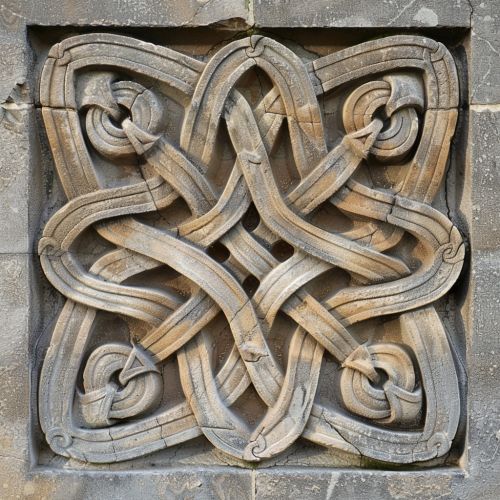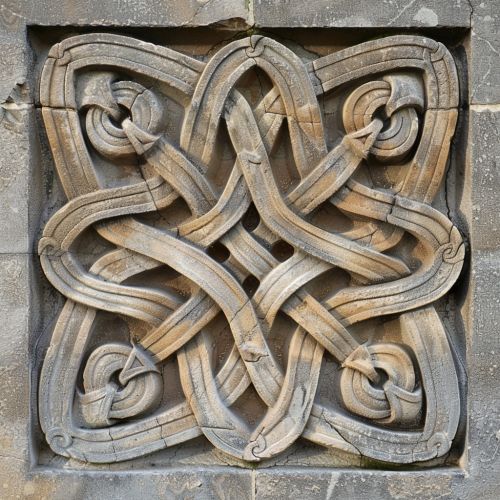Celtic Knot
Introduction
Celtic knotwork, often referred to as Celtic knots, is a distinctive and intricate form of decorative art that has its origins in the early medieval period. This art form is characterized by its interwoven and continuous patterns, which are often used to adorn manuscripts, monuments, and various artifacts. The complexity and beauty of Celtic knots have made them a subject of fascination and study for historians, artists, and enthusiasts alike.
Historical Background
The origins of Celtic knotwork can be traced back to the early medieval period, particularly among the Insular art of the British Isles. This period, roughly spanning from the 7th to the 12th centuries, saw the emergence of a unique artistic style that blended influences from Celtic culture, Christianity, and Germanic art. The earliest examples of Celtic knotwork are found in illuminated manuscripts such as the Book of Kells and the Lindisfarne Gospels, which date back to the 8th and 9th centuries.
Symbolism and Meaning
Celtic knots are often imbued with symbolic meanings, although interpretations can vary widely. Common themes include eternity, interconnectedness, and the cyclical nature of life. The continuous, unbroken lines of the knots are thought to represent the eternal nature of the spirit and the interconnectedness of all things. In Christian contexts, Celtic knots are sometimes interpreted as symbols of the Holy Trinity or the eternal nature of God.
Types of Celtic Knots
Celtic knotwork encompasses a variety of patterns and styles, each with its own unique characteristics. Some of the most common types include:
Simple Knots
Simple knots, also known as single-strand knots, consist of a single continuous line that weaves in and out to form a closed pattern. These knots are often used as borders or decorative elements in manuscripts and stone carvings.
Plaited Knots
Plaited knots, or braided knots, involve multiple strands that weave over and under each other in a braided fashion. These knots are more complex than simple knots and are often used to create intricate and visually striking designs.
Spiral Knots
Spiral knots incorporate spirals into the knotwork pattern, creating a dynamic and flowing design. Spirals are a common motif in Celtic art and are often associated with growth, evolution, and the natural world.
Zoomorphic Knots
Zoomorphic knots feature animal forms interwoven with the knotwork pattern. These designs often depict animals such as birds, snakes, and dragons, and are thought to symbolize various qualities such as strength, wisdom, and protection.
Techniques and Construction
The construction of Celtic knots involves a combination of mathematical precision and artistic creativity. The basic technique involves creating a grid of evenly spaced points and then drawing lines that weave over and under each other according to specific rules. The use of symmetry and repetition is a key aspect of Celtic knotwork, and many designs are based on geometric principles such as the Golden Ratio.
Cultural Significance
Celtic knots hold significant cultural importance in various contexts. In addition to their use in religious manuscripts and monuments, they are also found in jewelry, textiles, and other decorative arts. The enduring appeal of Celtic knots has led to their continued use in modern design, where they are often used to evoke a sense of heritage and tradition.
Modern Interpretations
In contemporary art and design, Celtic knots continue to inspire and captivate. Modern interpretations often blend traditional patterns with new materials and techniques, resulting in innovative and unique creations. From tattoos to digital art, Celtic knots remain a popular and versatile motif.
See Also
References


